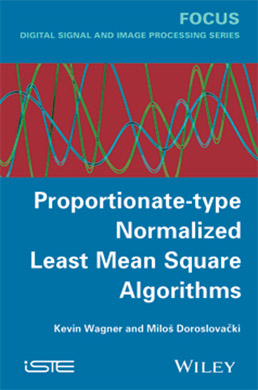
The topic of this book is proportionate-type normalized least mean square (PtNLMS) adaptive filtering algorithms, which attempt to estimate an unknown impulse response by adaptively giving gains proportionate to an estimate of the impulse response and the current measured error. These algorithms offer low computational complexity and fast convergence times for sparse impulse responses in network and acoustic echo cancellation applications.
New PtNLMS algorithms are developed by choosing gains that optimize user-defined criteria, such as mean square error, at all times. PtNLMS algorithms are extended from real-valued signals to complex-valued signals. The computational complexity of the presented algorithms is examined.
1. Introduction to PtNLMS Algorithms.
2. LMS Analysis Techniques.
3. PtNLMS Analysis Techniques.
4. Algorithms Designed Based on Minimization of User-Defined Criteria.
5. Probability Density of WD for PtNLMS Algorithms.
6. Adaptive Step-Size PtNLMS Algorithms.
7. Complex PtNLMS Algorithms.
8. Computational Complexity for PtNLMS Algorithms.
Kevin Wagner has been a physicist with the Radar Division of the Naval Research Laboratory, Washington, DC, USA since 2001. His research interests are in the area of adaptive signal processing and non-convex optimization.
Milos Doroslovacki has been with the Department of Electrical and Computer Engineering at George Washington University, USA since 1995, where he is now an Associate Professor. His main research interests are in the fields of adaptive signal processing, communication signals and systems, discrete-time signal and system theory, and wavelets and their applications.